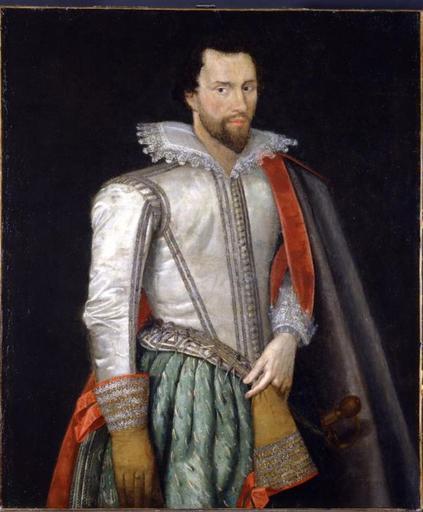MAKE A MEME
View Large Image

| View Original: | Sir_Thomas_Holte,1st_Baronet_of_Aston_Hall.jpg (579x700) | |||
| Download: | Original | Medium | Small | Thumb |
| Courtesy of: | www.flickr.com | More Like This | ||
| Keywords: Sir Thomas Holte bt. (1571 - 1654) was the original owner of Aston Hall (a Jacobean country house in Birmingham), the man after whom the Holte End stand of Villa Park is named, and the possessor of quite a legendary temper. The Holtes were a wealthy, land-owning family of some importance in Warwickshire. Their ancestors had owned land in the area several hundred years and it had been considerably added to with the acquisition of monastic land during the Reformation. The Holtes served as High Sheriff of Warwickshire, Justices of the Peace and Deputy Lieutenants for the county. They had influential friends and relatives both locally and in London. His father died when Thomas was only 21, and as his successor Thomas did much to further the family fortunes. He received a knighthood from James I as the King made his way from Scotland to London to claim his throne in 1603. In 1611 Sir Thomas was able to buy the title of baronet (James I sold these new titles in order to raise money to quell trouble in Ireland). Sir Thomas now outranked all the local families. He felt a grander home should be built to reflect both his wealth and status, the result of this desire was Aston Hall. Sir Thomas made use of his connections to secure his son, Edward, a position in King Charles I's household. Whilst in London, Edward met and married Elizabeth King, daughter of John King, the incumbent Bishop of London. Unfortunately, Sir Thomas did not give his permission for the marriage, and never forgave his son for proceeding with the wedding regardless. Edward was entirely cut out from his inheritance, and despite pleas from the King himself, Sir Thomas never allowed reconciliation. After the death of George in 1641, Edward was Sir Thomas' only remaining son. Sir Thomas re-married in short order, and made great efforts to raise another son, so that Edward could be permanently cut out of the estate. Edward died in 1643, having never returned to the family fold despite his several attempts. It was rumoured Sir Thomas locked up a daughter because she refused to marry her father's choice of husband. The story goes that she starved to death. Sir Thomas' second wife was able to give him another son, but the boy did not survive past childhood, in common with nine of the children from Sir Thomas' first marriage. During his last days he was finally persuaded to leave Aston Hall and all his estates to Edward's son, Robert. Sir Thomas was buried in Aston Church. Sir Thomas Holte bt. (1571 - 1654) was the original owner of Aston Hall (a Jacobean country house in Birmingham), the man after whom the Holte End stand of Villa Park is named, and the possessor of quite a legendary temper. The Holtes were a wealthy, land-owning family of some importance in Warwickshire. Their ancestors had owned land in the area several hundred years and it had been considerably added to with the acquisition of monastic land during the Reformation. The Holtes served as High Sheriff of Warwickshire, Justices of the Peace and Deputy Lieutenants for the county. They had influential friends and relatives both locally and in London. His father died when Thomas was only 21, and as his successor Thomas did much to further the family fortunes. He received a knighthood from James I as the King made his way from Scotland to London to claim his throne in 1603. In 1611 Sir Thomas was able to buy the title of baronet (James I sold these new titles in order to raise money to quell trouble in Ireland). Sir Thomas now outranked all the local families. He felt a grander home should be built to reflect both his wealth and status, the result of this desire was Aston Hall. Sir Thomas made use of his connections to secure his son, Edward, a position in King Charles I's household. Whilst in London, Edward met and married Elizabeth King, daughter of John King, the incumbent Bishop of London. Unfortunately, Sir Thomas did not give his permission for the marriage, and never forgave his son for proceeding with the wedding regardless. Edward was entirely cut out from his inheritance, and despite pleas from the King himself, Sir Thomas never allowed reconciliation. After the death of George in 1641, Edward was Sir Thomas' only remaining son. Sir Thomas re-married in short order, and made great efforts to raise another son, so that Edward could be permanently cut out of the estate. Edward died in 1643, having never returned to the family fold despite his several attempts. It was rumoured Sir Thomas locked up a daughter because she refused to marry her father's choice of husband. The story goes that she starved to death. Sir Thomas' second wife was able to give him another son, but the boy did not survive past childhood, in common with nine of the children from Sir Thomas' first marriage. During his last days he was finally persuaded to leave Aston Hall and all his estates to Edward's son, Robert. Sir Thomas was buried in Aston Church. | ||||